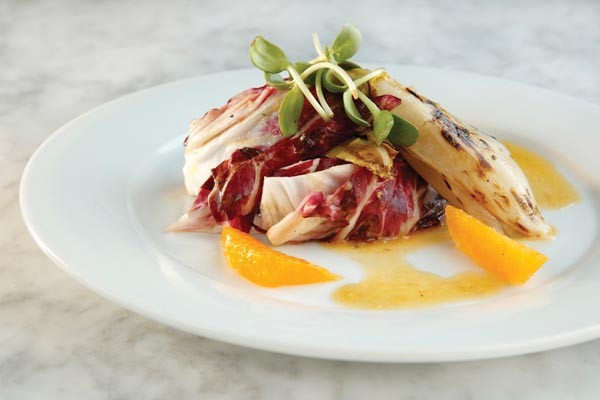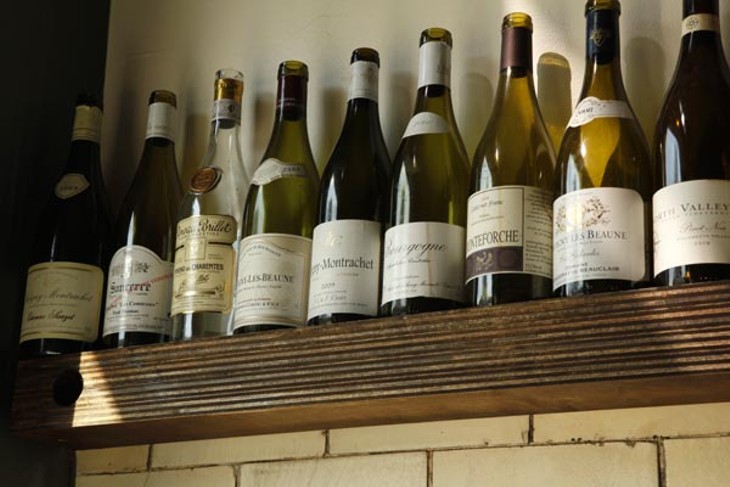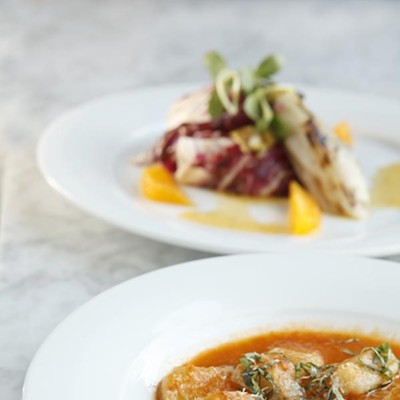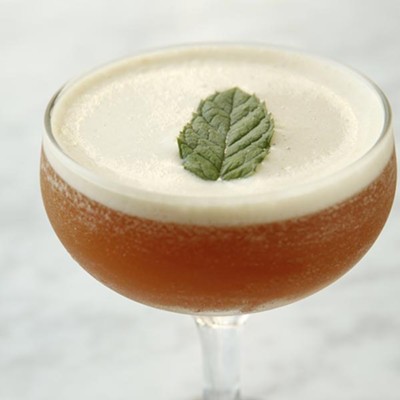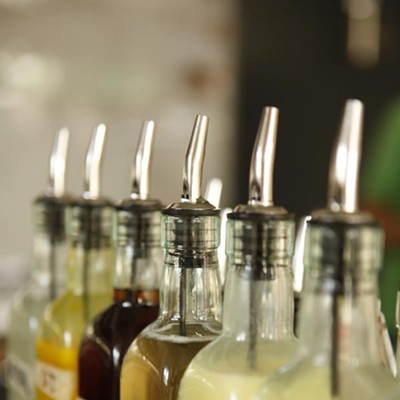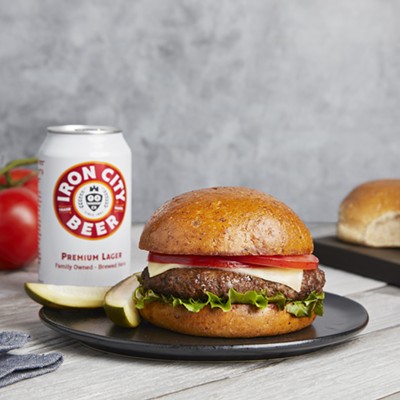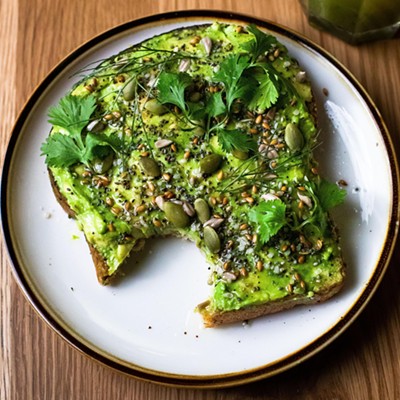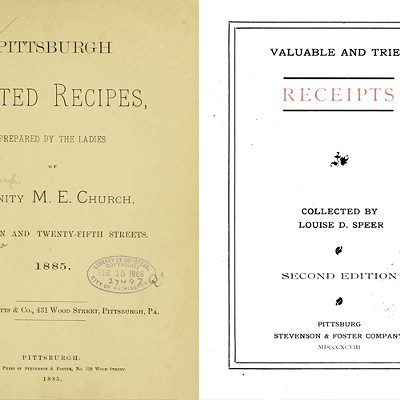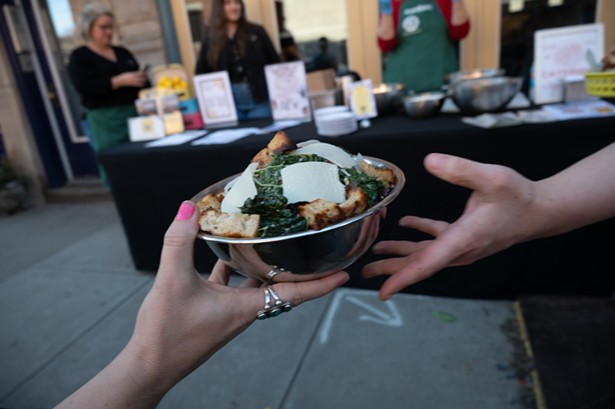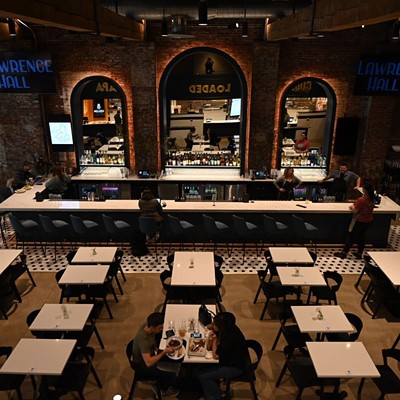Lots of restaurants serve alcohol, and many bars serve food of some description, but it's usually pretty clear where any given establishment's emphasis lies; one menu is almost always designed to complement the other. But Bar Marco, despite its name, is as serious about its food as it about its libations — or is it the other way around?
Bar Marco is exceptional in more ways than one. Located in the Strip District's old Engine House No. 7 (the erstwhile home of Firehouse Lounge and the cocktail bar Embury), it pulls off the effortless melding of old and new, casual and cultivated; unlike boutique-chic, this kind of style can't be bought. Bar Marco's dining room is defined by the same subway-tile wainscoting and pressed-tin ceiling that once surrounded the neighborhood's firefighting force, and its primary decor seems to consist of some abstract canvases, a couple of champagne corks hollowed out to create DIY micro-planters and a small armada of empty wine bottles. In this setting, the effect is less college dorm and more a direct communication of the breadth and depth of Bar Marco's connoisseurship.
Which is not to say that either the food or the drink menu is extensive; on the contrary, both are strictly curated, and the servers embrace their advisory roles, eagerly sharing their knowledge of the origins and attributes of each item on offer. If you are curious about a varietal you've never tried before, they will be happy to pour you a taste.
The food menu is tapas-inspired, dominated by small plates and charcuterie in the categories of cheese, meat "& things," such as marinated olives or local honey. The charcuterie are offered at a flat $3 per item and served with thin slices, almost shavings, of baguette. Several cheeses had cute names hinting at their mammal of origin; we enjoyed a rich, young, nutty "kidchego" that paired beautifully with a tiny slab of quince paste about the size of our camera's memory card. At the risk of sounding like gluttonous Americans, we had hoped for slightly more than this, or a single slice of cheese, for $3. The portion of house salami seemed less parsimonious, perhaps because there were several slices and they were packed with robust flavor. This extraordinary dried sausage could not have been farther from the luncheon meat that usually goes by this name; it was deeply beefy first, with notes of spices and seasoning coming on later, and we savored each individual slice.
Of the small plates, some were versions of classic tapas, like patatas bravas (fried potatoes) with aioli. Others, such as the smoked-pork tamales, borrowed from different cuisines. These were excellent without being innovative, featuring rich meat wrapped in moist cornmeal and steamed in a dried corn husk; the proportion of meat was just right, the corn was soft and neither dry nor gummy, and a superb salsa verde contributed freshness and zing. A smooth red salsa, possibly chili-based, was rather one-dimensional, however.
Fried eggplant consisted of two large rounds, simply fried in a light, golden crust, without a trace of mushiness, stringiness or bitterness. It was accompanied by the traditional cup of marinara-style sauce, which was very good. But the brilliant move was the garnish of orange wedges, whose juice enlivened the fruitiness of the tomatoes without compromising the simplicity of the dish.
The kitchen repeated this trick in a grilled radicchio and endive salad. Here, small sections of orange offered brightness against the smokiness of the grilled leaves, while the sweetness of the fruit balanced the mild bitterness of the radicchio. The grilling of the endive, meanwhile, turned its core into a tender, almost heart-of-palm-like delicacy.
Calamari salad was a Mediterranean delight, with ultra-tender tentacles; firm, earthy chickpeas; peppery arugula; and briny, bitter olives, delicately balanced in a light, tart dressing.
Our one entree was as successful as the tapas. Lamb's quarters is not a form of meat, but a common garden weed with a mild, mineral flavor not unlike spinach. Bar Marco integrated it into pasta noodles and served them with bitter-sweet squash, a few bright bits of tomato, mellow garlic slices and a savory broth that did more for this combination than any cream sauce would have.
At the end of our meal, chocolate cake was both dense and moist, enhanced by a dollop of blueberry preserves and a thin, scarlet layer of beet icing over traditional buttercream. Like our full experience at Bar Marco, it was beyond compare.

